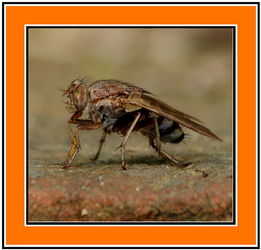
Horsefly Bites: A Detailed Guide
Have you ever been bitten by a horsefly? If so, you know how painful and irritating these insects can be. Horsefly bites are not only uncomfortable but can also lead to serious health issues. In this article, we will delve into the details of horsefly bites, including their symptoms, causes, prevention, and treatment. Let’s explore this topic from multiple dimensions to help you better understand and deal with these pesky insects.
Understanding Horseflies

Horseflies are large, robust insects that belong to the family Tabanidae. They are commonly found in warm and humid climates, particularly in areas with abundant vegetation. Unlike mosquitoes, horseflies have a slender body and long, slender legs. Their most distinguishing feature is their large, prominent eyes and a pair of strong, piercing mouthparts used to feed on the blood of animals, including humans.
Table: Key Characteristics of Horseflies
| Characteristics | Description |
|---|---|
| Size | Up to 1.5 inches in length |
| Color | Black, brown, or gray with yellow or white markings |
| Wings | Large, clear wings with a distinctive pattern |
| Feeding Habit | Blood-sucking |
Causes of Horsefly Bites

Horsefly bites occur when these insects land on a host and use their piercing mouthparts to feed on blood. The bite is usually painful and can leave a red, itchy bump on the skin. Here are some common causes of horsefly bites:
-
Attractiveness to Blood: Horseflies are attracted to the scent of carbon dioxide and lactic acid, which are released by humans and animals when they breathe and move.
-
Presence of Horseflies: Horseflies thrive in warm, humid environments with abundant vegetation, such as forests, meadows, and marshes.
-
Outdoor Activities: Engaging in outdoor activities, such as hiking, camping, or gardening, increases your chances of encountering horseflies and getting bitten.
Symptoms of Horsefly Bites

The symptoms of a horsefly bite can vary from person to person. Here are some common symptoms to look out for:
-
Painful Bite: The initial bite is often painful, and you may feel a sharp, stinging sensation.
-
Red, Itchy Bump: A red, swollen bump will appear at the site of the bite. This bump may be itchy and tender to the touch.
-
Swelling: The area around the bite may become swollen, especially if you are allergic to horsefly bites.
-
Wheal: A wheal, or raised, white area, may form around the bite. This is a common reaction to the insect’s saliva.
-
Secondary Infection: In some cases, a horsefly bite can lead to a secondary infection, characterized by increased pain, swelling, and redness.
Prevention of Horsefly Bites
Preventing horsefly bites is essential, especially if you are allergic to these insects. Here are some effective prevention strategies:
-
Wear Protective Clothing: When spending time outdoors, wear long-sleeved shirts, long pants, and hats to cover as much skin as possible.
-
Use Insect Repellents: Apply insect repellents containing DEET, picaridin, or oil of lemon eucalyptus to exposed skin and clothing.
-
Stay in Well-Lit Areas: Horseflies are more active in low-light conditions, so try to stay in well-lit areas when possible.
-
Eliminate Horsefly Breeding Sites: Remove standing water and overgrown vegetation around your home to reduce the number of horseflies in your area.







